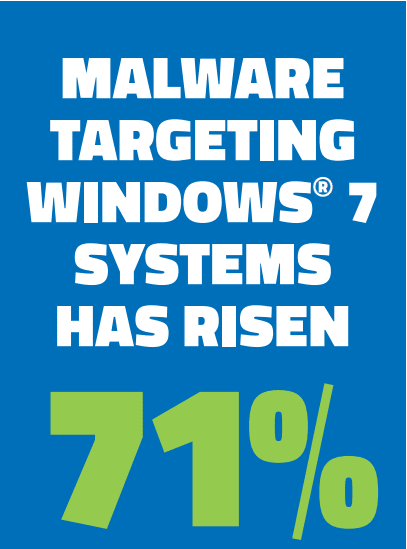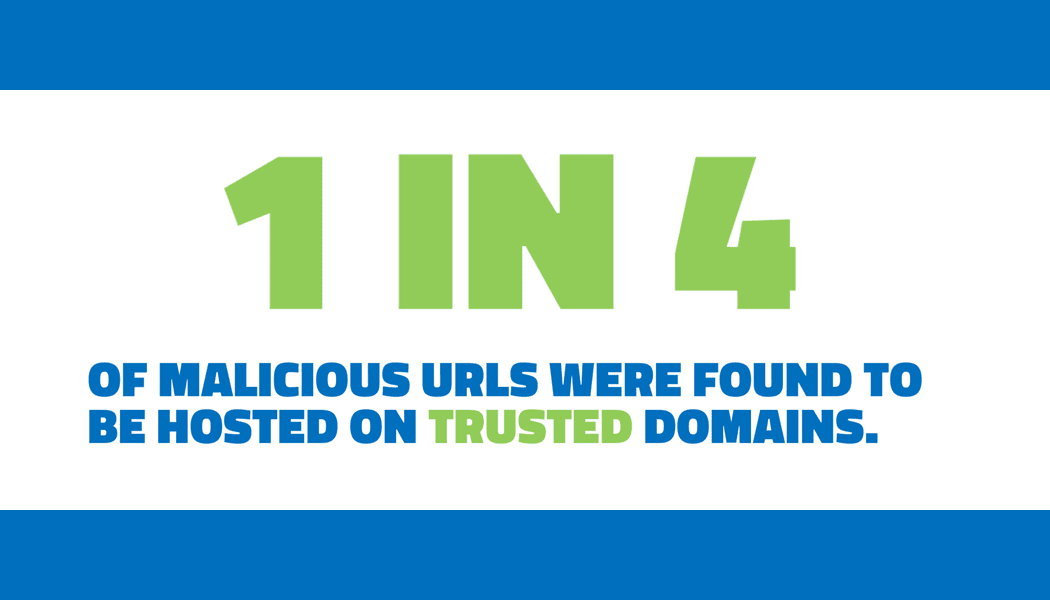Nearly 1 in 4 malicious URLs (24%) are hosted on trusted domains, according to the 2019 Webroot Threat Report. This shows that the attackers are trying to gain the trust of users and then take it for granted.
Webroot, a leading IT security firm, discovered more than 1.5 million unique phishing URLs in 2019 so far. The company has also protected over 3.35 million endpoint devices against these phishing URLs.
The 2019 Webroot Threat Report examines the emerging threats and cybersecurity trends, and provides perspectives and predictions for the future.
Key findings of the report: Emerging threats and cybersecurity trends
Here are the highlights of the report including the latest cybersecurity trends, emerging cyberthreats, and more.
1. Cybercriminals taking the trust for granted
As mentioned above, the cybercriminals are exploiting the human vulnerabilities, i.e. trust.
Twenty-four percent of the malicious URLs were found on trusted domains. The attackers are hacking legitimate websites to host malicious content. The visitors trust these sites and take actions without sensing any suspicious activity.
Around 29% of the phishing websites are using HTTPS to trick end users who look for trusted sites that use SSL certificate for security.
“If you unwittingly end up on a well-faked phishing copy of your banking website and see the lock icon, it’s natural to assume that you’re in the right place and all is well. Except when you try to log in, what you’re really doing is securely transmitting your login credentials to an attacker. In this case, HTTPS would’ve been used to trick you.”
– Hal Lonas, CTO, Webroot

2. Cybercriminals looking for quality over quantity
This is a trend nowadays among the attackers that they are determining the value of the systems being attacked. No doubt, they are carrying out numerous malware campaigns, but their aim is to target the valuable systems.
For example, if they find a system with high speed and processing power, they would try out on that system to use it for cryptocurrency mining.
“Although a high number of infections is still valuable, threat actors are effectively going for quality over quantity when they choose to profile their victim’s worth.”
– Jason Davison, Advanced Threat Research Analyst
Related read: Ninety-nine percent of IaaS misconfigurations remain unnoticed by businesses: McAfee
3. 95%of malware unique to a single system
The malware encounter rates haven’t risen much compared to last year, but things have changed a lot. Ninety-five percent of the malware now is unique to a single system, up from 92% in 2018. This shows that most of the malware is very difficult to be detected by signature-based technologies.
4. Rise in malware against Windows 7
Earlier this year, Microsoft had announced that it is dropping support for Windows 7 from January 2020. Despite that, the users are barely migrating to the Windows 10.

The new finding by Webroot is an alarming one for all the users of Windows 7, as it reveals that Windows 7 computers are twice as likely to become infected compared to Windows 10. The malware against Windows 7 has increased by 71% in 2019. The reason behind targeting Windows 7 is that attackers are in hopes of exploiting unpatched vulnerabilities.
“Even though older operating systems are being used less and less, breaching even a single out-of-date machine can take down a company’s whole network. That’s how infections like WannaCry and NotPetya spread so quickly in 2017— they took advantage of vulnerabilities in older, unpatched operating systems.”
– Briana Butler, Sr. Engineering Data
5. Major growth in phishing sites
Webroot mentioned that there has been very high growth in the phishing sites. In early April, the security firm protected its customers from accessing around 60K phishing sites in a single day.
In the first half of this year, over 1.5 million unique phishing websites were detected, along with 3.4 million others detected via proactive crawling and analysis on the internet.
For more insights (cybersecurity trends and emerging threats) from the survey, download the full 2019 Webroot Threat Report.
Images source: Webroot








